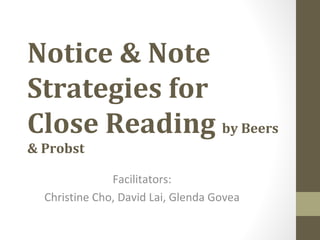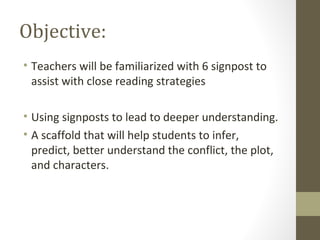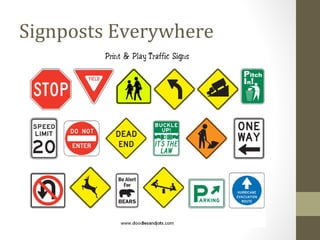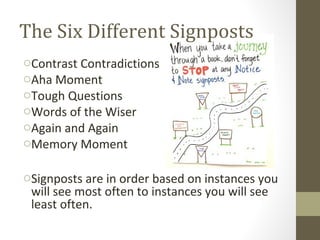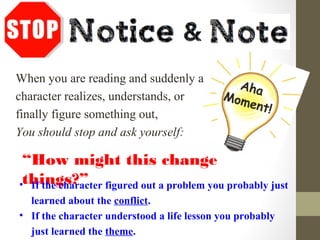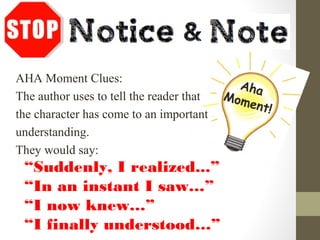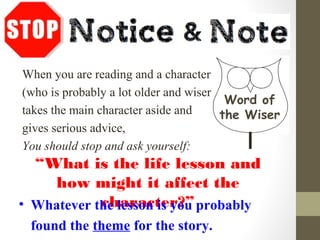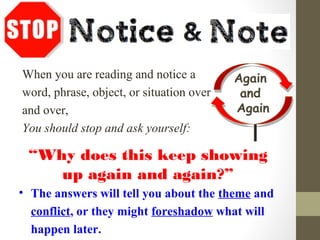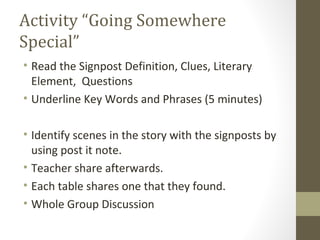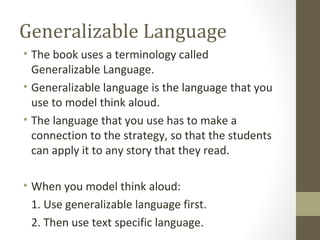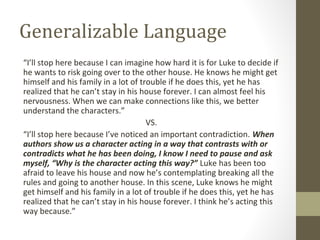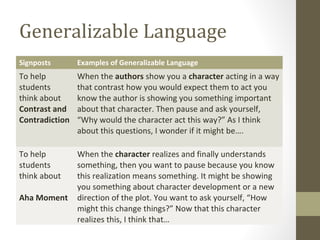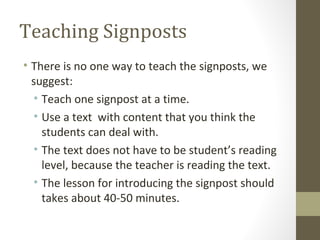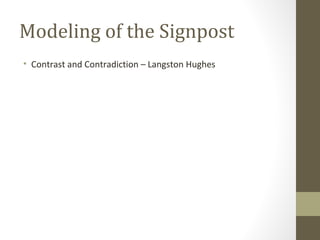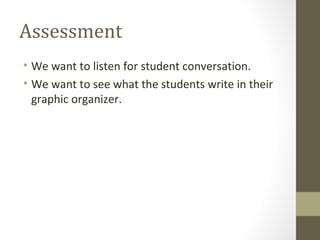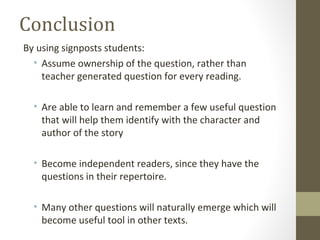This document discusses the Notice & Note signposts strategy for close reading. It introduces six signposts - Contrast/Contradiction, Aha Moment, Tough Questions, Words of the Wiser, Again and Again, and Memory Moment. Each signpost is accompanied by clues and questions readers should ask when they encounter it. The document provides examples of modeling think-alouds using generalizable language and recommends teaching the signposts one at a time using the gradual release of responsibility model. Assessment involves listening for student conversations and reviewing graphic organizers. The conclusion states that using signposts helps students take ownership of their reading.
